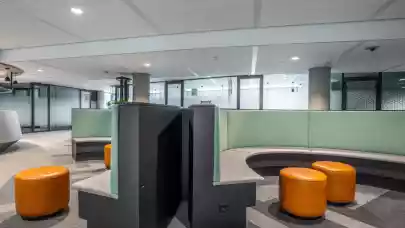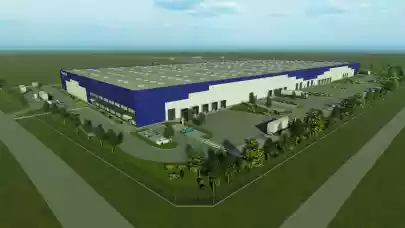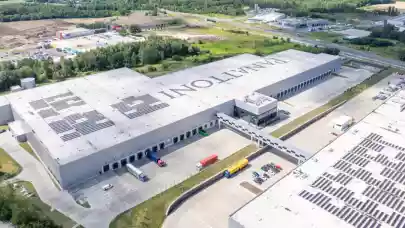
The Q3 2020 property investment volume for Romania is estimated at €408 million, a value approximately 68% higher than the one registered in the same period in 2019. Although the road ahead is marked by uncertainty, considering the persistence of the COVID-19 pandemic and the restrictions associated with it, there is a consistent pipeline of deals which could be closed soon and throughout 2021. JLL has published its Bucharest City Report for Q3 2020. The report provides a detailed analysis of specific real estate markets in Bucharest: office, retail, industrial and residential.
Investment market
- The Q3 2020 property investment volume for Romania is estimated at €408 million, a value approximately 68% higher than the one registered in the same period in 2019. For the first nine months of 2020, transactions volume reached €816 million.
- Even though expectations for Q3 were not very high, considering the emergence of the second wave of the COVID-19 pandemic, the investment volume was boosted by the closing of one of the largest deals ever signed in Romania, the €307 million acquisition of the NEPI Rockcastle’s office portfolio by AFI Europe.
- Although the road ahead is marked by uncertainty, considering the persistence of the COVID-19 pandemic and the restrictions associated with it, there is a consistent pipeline of deals which could be closed in the near future and throughout 2021.
- Both prime office and retail yields were resilient in Q3, standing at 7%, while prime industrial yields remained at 8%. The impact of the medical emergency in Romania as well as in the rest of Europe on yields will probably be seen towards the end of the year and especially in 2021. Product quality will make a big difference in terms of achievable yields.
Office market
- After total office demand suffered an almost 55% drop during the first half of 2020 compared to H1 2019, the trend was finally reversed in Q3. Total gross transaction volume reached approx. 63,100 sqm. That is almost the same volume as the one recorded in Q3 2019, of 62,800 sqm. Compared to the previous quarter, in Q3 2020 gross take-up registered an over 40% increase. The average transaction size in Q3 2020 was approx. 1,800 sqm.
- However, even though gross take up was similar to the previous year, net take-up in Q3 2020 accounted for only 14,500 sqm, or 23% of the gross take-up, compared to 40,200 sqm, or almost 70% of gross demand during the same period of 2019. By far, renewals had the largest share in total transactions in Q3 2020, with over 50%.
- In terms of vacancy, Q3 experienced a significant increase, from 9.3% in Q2 to approximately 10.9%.
- After an increase of the office stock by 106,100 sqm during the first half of 2020, only one building was delivered in Q3, Campus 6.3, developed by Skanska in the Center-West sub-market, adding approx. 17,600 sqm GLA.
- Thus, office deliveries in the first nine months of 2020 totalled 123,700 sqm, representing approximately 50% of the volume recorded in the same period of 2019, when almost 250,000 sqm were added to the market.
- Relatively few deliveries are expected for the last quarter of 2020, totalling approximately 35,800 sqm. By far the largest is One Tower, with 23,600 sqm GLA, in the Floreasca – Barbu Vacarescu sub-market, followed by Politehnica Business Tower, with another 8,000 sqm GLA in the Center-West sub-market.
- Considering that an end for the COVID-19 pandemic is not foreseeable in the near future, combined with a low take-up of office space and new buildings expected to be delivered on the market, JLL estimates that the vacancy rate will continue to increase during Q4.
Retail market
- The retail sector faces challenging times during the pandemic, especially because of the restrictions imposed to contain the spread of the COVID-19 virus.
- Overall, retail sale volumes in Romania decreased in August by 1.6% compared to the previous month, but on the other hand, showed a small increase of 2.3% when compared to August 2019-
- No new shopping centres were delivered in Bucharest during Q3. Therefore, the total modern retail stock in Bucharest stood at 1.176 million sqm of GLA at the end of Q3.
- The lack of new projects in the capital was compensated by three new important deliveries in regional cities: Shopping City Targu Mures (39,800 sqm GLA) by NEPI Rockcastle Dambovita Mall in Targoviste (33,000 sqm) by Prime Kapital and NEST Oradea (6,400 sqm GLA) by RC Europe.
- An extra 45,000 sqm of GLA will be added in Q4 (AFI Palace Brasov), bringing the annual supply to 157,200 sqm of GLA by the end of the year. This represents a small 8.7% decrease when compared to 2019 when 172,200 sqm were completed. All but 6,000 sqm (the extension of Veranda Mall in Bucharest) of this year’s deliveries are represented by schemes in regional cities.
Industrial market
- In Q3 total rental demand for modern industrial and logistics space in Romania summed to approx. 123,600 sqm. Net take-up accounted for 84% of the total or approximately 104,000 sqm.
- Bucharest had by far the largest share of total demand for industrial and logistics spaces in Q3, respectively 82% (approx. 101,000 sqm), followed by Constanta, with an 8.3% share (10,300 sqm) and Timisoara, with an over 6% share (7,600 sqm).
- The FMCG sector was the most active during Q3, accounting for 35% of total demand, or 43,600 sqm, followed by the logistics sectors, with almost 22% or 26,800 sqm.
- Total demand during the first nine months of 2020 reached almost 392,300 sqm, approximately 16% above the 337,000 sqm recorded during the same period of 2019.
- Rents for industrial spaces marginally decreased during Q3 2020, reaching between €3.6-4.0/sqm/month in Bucharest and its vicinity, and between €3-4/sqm/month in other regions of Romania. Even though the COVID-19 pandemic is continuing, it is unlikely it will trigger a significant change in market rents for industrial spaces, as demand remains strong.
- Vacancy rates decreased during Q3 at the national level, from 5.7% in Q2 to approximately 5%. The same trend was recorded in Bucharest & Ilfov, where vacancy decreased from 6.8% in Q2 to approximately 6% in Q3.
- Approximately 108,500 sqm of new industrial and logistic space were delivered during Q3, slightly above the previous quarter.
- Bucharest & Ilfov accounted for most of the new space, with over 83,500 sqm, or close to 77% of total deliveries. The rest was represented by the Center region, with approximately 11,200 sqm, West & North-West, with 10,000 and South-West, adding another 3,800 sqm.
- Therefore, at the end of Q3, the modern industrial stock to rent in Romania reached over 4.87 million sqm.
- During the first nine months of 2020, almost 410,000 sqm of modern industrial and logistics warehouses were delivered nationwide. Approximately 180,000 sqm are expected to be added to the stock in Q4, thus bringing the total deliveries for 2020 to almost 600,000 sqm, a value similar to 2019.
- The industrial and logistics sector in Romania proved to be resilient in the face of the COVID-19 pandemic and most real estate developers carry on with their plans.
Residential market
- The third quarter of 2020, marks a more stable market environment, continuing an ascending transactional activity throughout July 2020 (+15%) as in the same period of 2019.
- Depending on the evolution of the pandemic in the following months and on the possible restrictions that might be imposed, JLL foresees a mild decrease in the demand towards the end of the year.
- The estimated supply at the end of the year will reach approximately 15,600 units. Moreover, given the delays in construction completions occurred due to the pandemic slowdown, the new supply in 2021 will be boosted by an approx. 2,700 more units initially expected for 2020 and moved to the 2021 supply.
- The future residential supply might be increased to some extent by the reconversion of planned office projects into mixed-use projects with a residential component, balancing the development cash flow and providing a sort of safety net during market downturns for commercial properties.
- A new trend is emerging changing the face of the residential products, as more and more developers are introducing a built-to-rent component in their projects or even move towards a fully built-to-rent project. This will set the scene for the foreign institutional investors to place Romania on the multifamily investments map.
- Residential prices registered a 0.8% decrease in Q3 2020 as compared to Q2 2020, with an average price of €1,440/ sqm.
- The market will continue to be favourable for experienced developers with a portfolio of apartments already delivered or in an advanced stage of development



